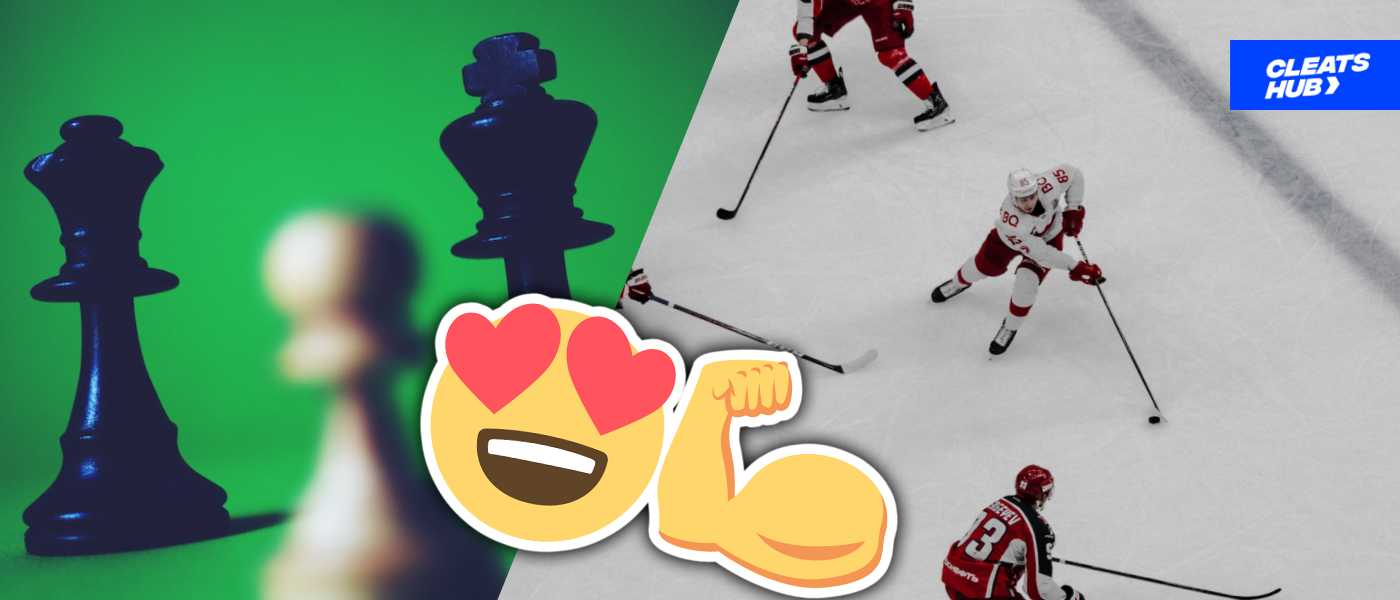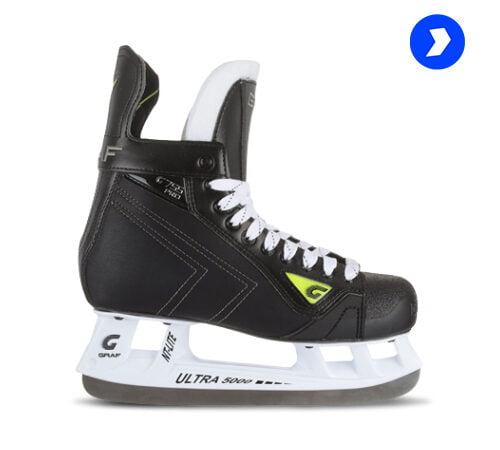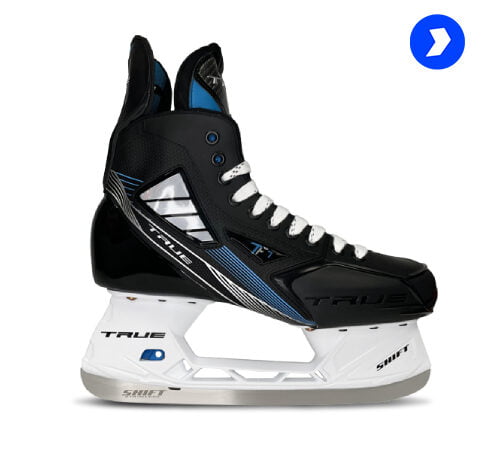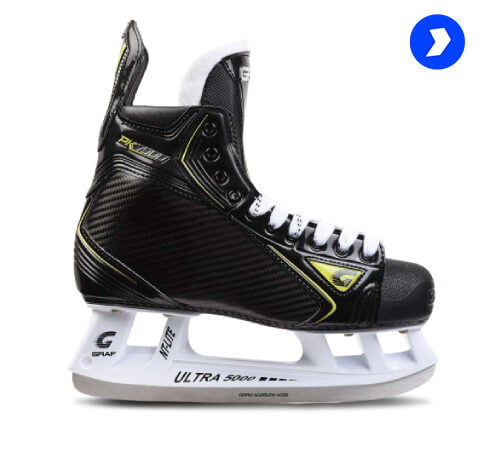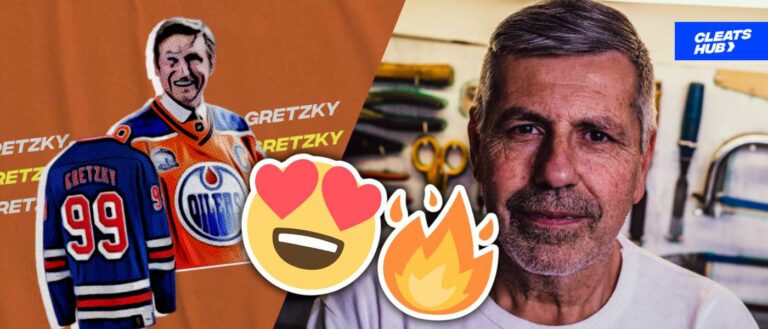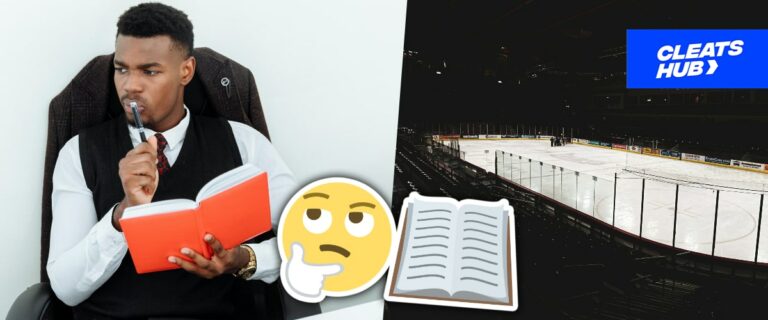What Is A Power Play In Ice Hockey?
If you are familiar with ice hockey, you will agree with me that the power play phase of the game is one of the most exciting. If you are not a hockey enthusiast, this term might be unfamiliar to you, and you might not be aware of its occurrence throughout a game.
While watching ice hockey, you may have noticed that there are times during an ice hockey game when one team has more players than its opponent. If you’re unfamiliar with the sport, you might wonder why the game seems unbalanced. In simple terms, what is going on at that precise moment is called the powerplay.
We shall examine the definition of power play, its occurrence, words, guidelines, and more in this post. We’ll also talk about some of the tactics teams employ when going on a power play. Start now.
What Is A Power Play?
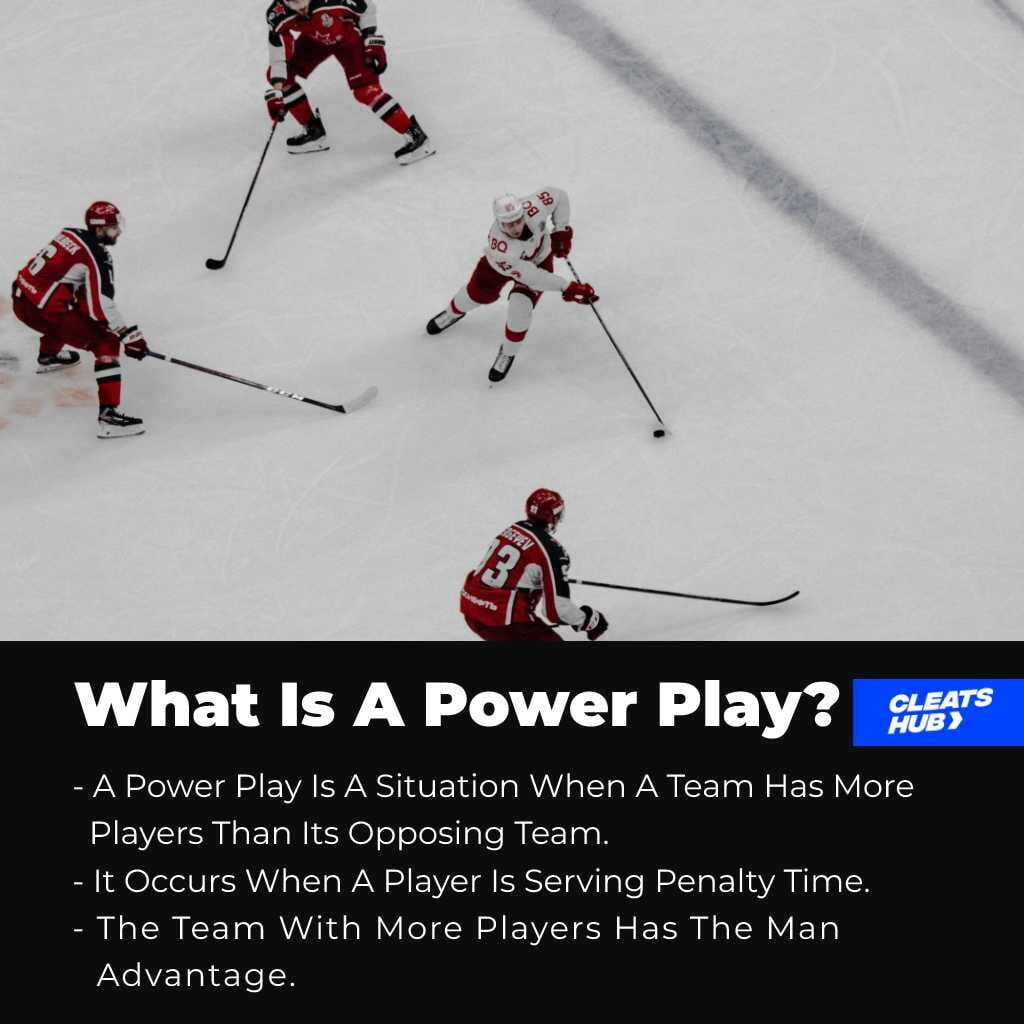
In ice hockey, a power play occurs when one side has more players on the ice than the opposing team because at least one opposing team player is serving penalty time in the penalty box.
Ice hockey games are typically played between two teams of six players each (one goaltender and five skaters). If a team has less than the regular five skaters on the ice because one or more players are serving penalty time for their violations, the team with the most players is considered to be on the power play.
Consider the following scenario: a team member is given a penalty (say, a 2-minute penalty) and is forced to go to the penalty box. While he serves his penalty time, his team loses one player. As a result, instead of a 5-on-5 match, it becomes a 5-on-4 encounter.
In some situations, more than one player on a team is required to serve the violation time, and the game may be reduced to a 5-on-3 format. A man advantage is the edge that a team with more players has over a side with fewer players.
Also, if two players from opposing sides are given penalties at the same time, the balance is even. Why? This is because each side has a man serving penalty time, reducing the player count to 4-on-4.
Power plays can take place in the following configurations: 5-on-4, 5-on-3, and 4-on-3. Ice hockey teams, on the other hand, must have at least three players on the ice at all times (exempting goalies). If a team has two players in the penalty box and a third player receives a penalty, the offending player will not serve his punishment time until one of the other players in the penalty box completes his infraction time.
Power Play Terms
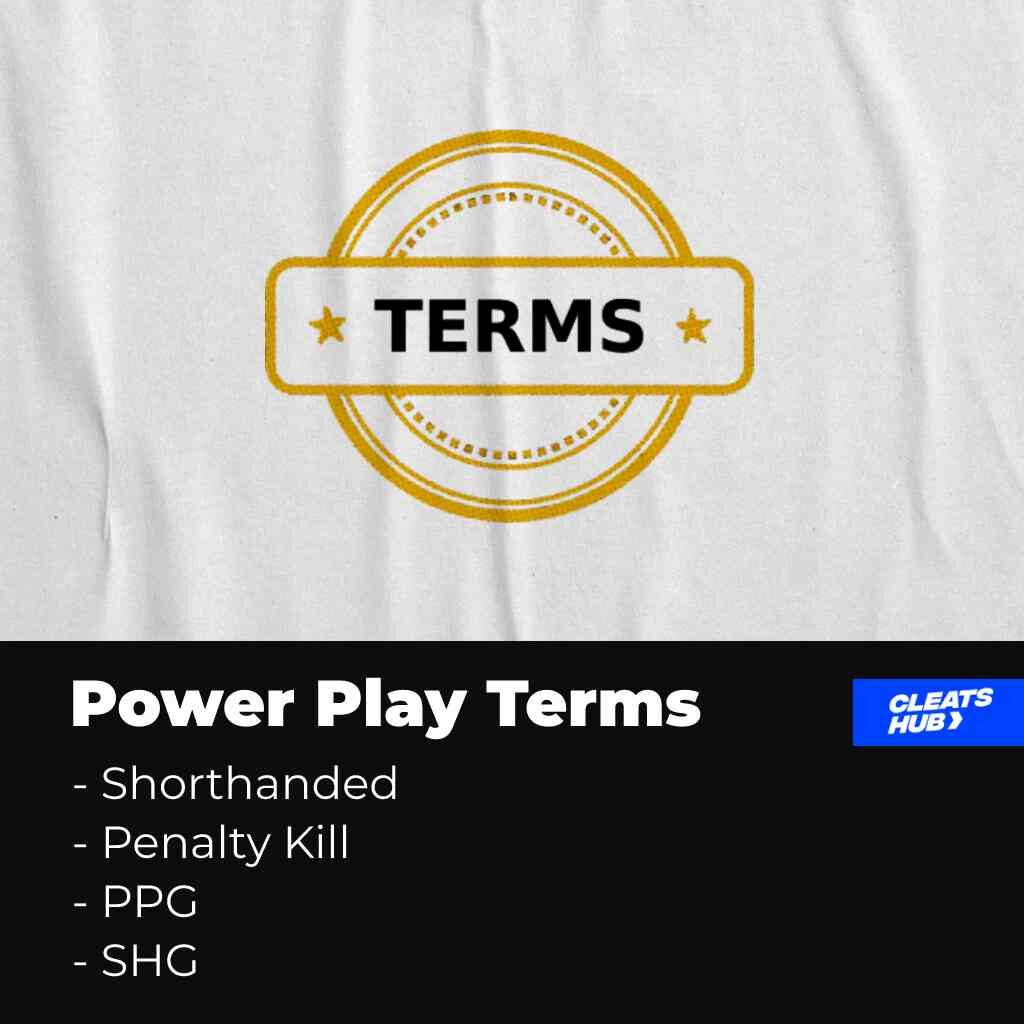
Before going on in this article, we will be looking at some terms that will occur throughout the article. These terms are common when talking about power play in ice hockey.
Shorthanded
A power play is being used by the team on the ice with the man advantage. Consequently, the team with fewer players is said to be shorthanded.
Penalty Kill
A team playing with fewer players engages in a penalty kill when it focuses primarily on defense and makes every effort to prevent the other team from going for a power play goal.
This is because, once a team is on the power play, its main goal is to score goals while they have the man advantage. The team with fewer players, however, adjusts its strategy to prevent goals from being scored.
PPG
An item that can be shown on a player’s stats is a power play goal. PPG is the total number of goals a club has scored while using their power play advantage. It demonstrates how effectively a player may take advantage of the man advantage his side possesses. Due to the team’s increased ability to mount ferocious offensive assaults, power-play goals are quite common.
SHG
The stats of a player also include shorthanded goals. SHG, as opposed to PPG, measures the number of goals scored by a shorthanded team. Although they are uncommon, SHG do happen on penalty kills.
If you want to know what the various stats in ice hockey mean, you can read “Understanding Ice Hockey Stats: Players & Teams“.
Rules Of Power Play
The following are some of the rules of power play in ice hockey.
- A player who commits a penalty is sent to the penalty box. This then gives the opposing team a power play
- Offending players will be held in the penalty box until the end of their infraction time
- Players with a minor penalty spend 2 minutes, while those with a major penalty spend 5 minutes. Note that a player can also be given a double minor penalty. The player will spend four minutes in the penalty box in cases like this.
- Players assessed with a two-minute minor penalty will be allowed to leave the box before the end of the infraction time if the opposing team scores (i.e. the team on power play). However, this rule does not apply to major penalties.
- However, if a SHG is scored, the penalty clock continues, and the offending player is not allowed to leave the penalty box.
- When two players from a team are in the penalty box, a third player will not be sent to the penalty box until the penalty time for one of the two players expires.
- Shorthanded teams can not be called for icing.
How Long Does A Power Play Last
Power plays last as long as a team has more players than its opposing team. Once the game evens out (both teams have the same number of players), the power play ends. However, this depends on the type of penalty given and the infraction time.
Can A Power Play Occur In Overtime
Power plays can happen at any time during the game, even when it’s overtime. The overtime regulations of leagues like the NHL, however, differ slightly from those in other leagues.
The NHL implemented a new overtime regulation that has an impact on the amount of players on the rink beginning with the 2015–16 season. The NHL changed the standard regulation from a 5-on-5 game to a 3-on-3 game (overtime rule).
But, how does this regulation change if power plays happen during overtime?
A change is made to the power play rule in overtime because ice hockey regulations state that a team cannot have fewer than three skaters on the ice. Instead of sending a player to the penalty area, the non-offending team adds a player to their team. This gives them the man advantage over the offending team.
Thus, if a player commits a penalty during overtime, a player will be added to the squad of their adversary for the duration of the penalty. This implies that their adversary will play a 4-on-3 or even a 5-on-3 game. As a result, the team of the offending player is down a player and faces a power play from their rival
NHL Team With Highest Power Play Percentage (2021-22)
When reading the stats of NHL teams, you can easily find the power play percentage (PP%) of NHL teams. Power play percentage shows the likeliness of a team scoring a goal during a power play. It is derived by finding the percentage of power-play goals to the total number of power plays.
The table below shows the highest-ranking teams with the best PP% during the 2021-22 season.
| Team | Power Play Percentage (PP%) |
| Toronto Maple Leafs | 27.3 |
| St. Louis Blues | 27.0 |
| Edmonton Oilers | 26.0 |
| New York Rangers | 25.2 |
| Florida Panthers | 24.4 |
| Nashville Predators | 24.4 |
| Colorado Avalanche | 24.0 |
| Tampa Bay Lightning | 23.9 |
| Vancouver Canucks | 23.5 |
| Calgary Flames | 22.9 |
NHL Team With Highest Power Play Percentage (2022-23)
The 2022-23 NHL regular season was another successful, fun-packed season that eventually transitioned to an intense battle for the Stanley Cup. We also saw many power plays during the regular season, as well as power-play goals.
In this section, we will be ranking the top NHL teams with the highest power play percentage for the 2022-23 regular season. We will choose not to include the PPG% from the NHL playoffs because it takes out half of the teams in the franchise.
| Teams | PPG | PPG% |
| Edmonton Oilers | 275 | 32.36 |
| Toronto Maple Leafs | 246 | 26.02 |
| Tampa Bay Lightning | 280 | 25.36 |
| Los Angeles Kings | 269 | 25.28 |
| Dallas Stars | 256 | 25.00 |
| Colorado Avalanche | 261 | 24.52 |
| New York Rangers | 245 | 24.08 |
| Ottawa Senators | 306 | 23.53 |
| Buffalo Sabres | 269 | 23.42 |
| Florida Panthers | 276 | 22.83 |
Strategies Of Power Play

Teams on power play have strategies they employ to ensure that they make the most of the man-advantage they enjoy. This article will briefly explain these strategies so you can recognize them on the ice when you see them.
1-3-1
Indeed, teams on the power play use the 1-3-1 configuration to set up quick-shot opportunities. How do you identify it then?
This tactic places one player near the top of the blue neutral zone, three in the middle, and one in front of the goalie. Defensemen who distribute the puck to other players frequently play in close proximity to the blue line.
Between the top player and the player in front of the goalie’s net are the three players in the center. The third player stays in the center while the first two take a left and right-wing apiece. Any of these players can score from their placements because they are in the offensive zone.
The last player is positioned in front of the goalie’s goal net. His task is to watch for an opening pass that he can take advantage of. Whenever he gets a ball, he either shoots or deflects shots into the goal net. This is why using a 1-3-1 formation is so effective because it gives goalies too much to handle.
With a strong attack approach, the 1-3-1 formation generates a lot of passing lanes and goal-scoring opportunities. The team’s defensive zone is left undefended and exposed, leaving them vulnerable to the offense.
Umbrella
The Umbrella tactic keeps two players on each side of the opponent’s net and three players close to the offensive zone’s blue line. The remaining two players below are in charge of scoring and deflecting, while the three players close to the blue line originate shots and make passes
Overload
Another tactic to undermine the effectiveness of the opposition’s defenses is overload. The team with the power play cycles the puck in the corners during overload until the defense of the opposition is breached. When this occurs, the power play team seizes the opportunity and attempts a goal.
Conclusion
Power plays are fun to watch in ice hockey, and when it is taken advantage of, a team can change the game’s outcome. So far, we have looked at the definition of power play, its terms, and even NHL teams with the highest power play percentage.
I hope you have learnt something new today. Thanks for reading, and have a great day.
Psstt…. The Top Performing Cleats

